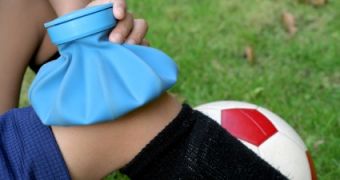As most of us have already found out the hard way, working out also implies a lot of pain, especially after the first sessions, when the effort is still too much for our body, which may take a little time to get used to. However, working out comes with even more pain in the case of a strain or a pulled muscle, which is why we always have to be prepared for it with an ice bag, trainers and health experts tell us.
Ice works wonders in such cases, but only if applied correctly. Of course, it’s not rocket science, but making the pain go away does require a few steps that have to be followed to the letter. The first one would be applying ice immediately after the injury: if we notice pain in a joint or know that we’ve pulled a muscle, waiting until taking action (or, even worse, continuing with our workout) only spells trouble. Ice should be applied immediately, experts say, and continued for the next two days until the pain goes away.
A common sense thing is, of course, to not apply the ice directly on the skin. An ice bag is ideal in this sense, but, if we don’t happen to have one lying around the house, we should wrap the ice in a towel or a piece of cloth, and only afterwards have it make contact with the sore spot. Bags of frozen peas or corn (or any other vegetable) are even better than these two options, since they come already packaged and can be molded to fit the painful area at will.
While icing an injury, we should also keep an eye on the watch. It should not take longer than 20 minutes at a time, so as to prevent further damage to the tissue. In between sessions, we should make sure we warm up, so this means we shouldn’t ice for yet another 45 minutes or so. While icing, experts explain, we should keep the painful area (knee, elbow, ankle) elevated above the heart to make the swelling go away.
The last tip for icing an injury is, again, common sense: experts share we should rest until the soreness completely disappears. Rest is actually one of the key elements in case of a strain or a pulled muscle, as part of the RICE treatment – rest, ice, compression (with an ice bandage, for instance), and elevation. If we stick to these simple “rules,” we should be back up and running in almost no time.

 14 DAY TRIAL //
14 DAY TRIAL //